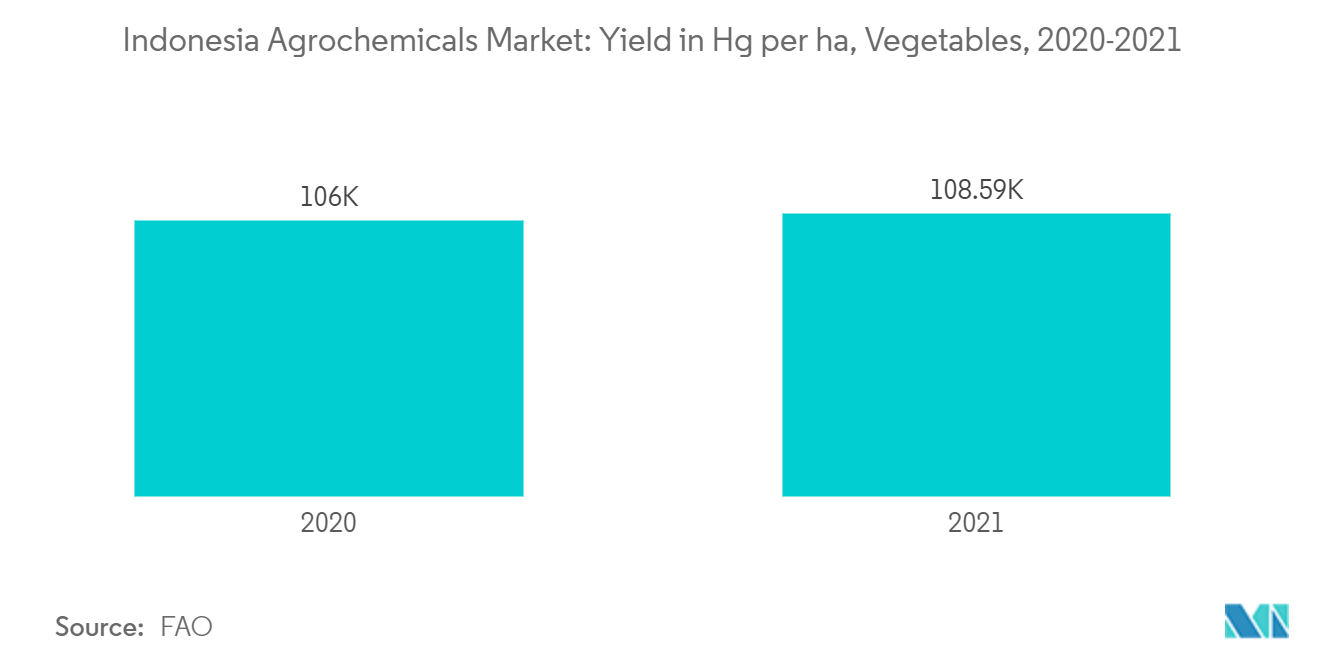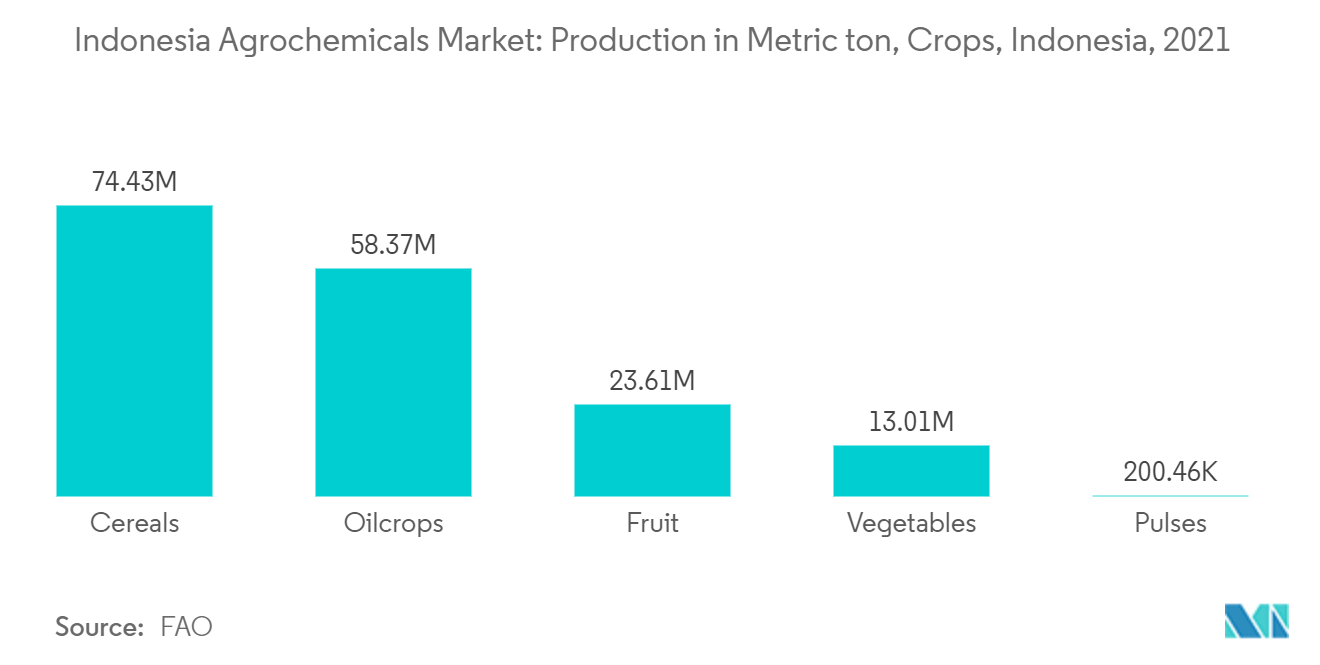Market Trends of Indonesia Agrochemicals Industry
This section covers the major market trends shaping the Indonesia Agrochemicals Market according to our research experts:
The Need for Increased Land Productivity is Driving the Market
Indonesia is a nation troubled by the significant slowing down of productivity gains of most food crops due to most farmers operating less than a one-half hectare. Adding to that, the agriculture segment is facing threats from many factors like changes in climatic conditions, reducing soil fertility, an increase in the number of plant diseases, and others resulting in low yields. To increase the product, the government of Indonesia is trying to improve the usage of agrochemicals. For instance, according to the Food and Agriculture Organization (FAO), in 2020, the average yield of vegetables was 105,996 kg per ha, slightly increasing to 108,591 kg per ha in 2021. Thus, to enhance productivity, agrochemicals have become essential to protect the crop against adversities.
The government has successfully increased the use of mechanized agricultural technology, invested in infrastructure, and expanded the total area of farming land, leading to increased use of agrochemicals. Furthermore, the government wants to improve agricultural production to increase food self-sufficiency and enhance agricultural yields. It has to depend on imports of staple foods such as rice and soybean from other countries to cater to the growing population. Therefore, there is a greater need to use agrochemicals to boost productivity as, currently, agriculture is still largely small-scale in the country.

Cereals Segment Dominates the Market
Cereals are a staple food and an important source of nutrients in the country. Cereal products are an important source of energy, carbohydrates, protein, and fiber, as well as containing a range of micronutrients such as vitamin E, some of the B vitamins, magnesium, and zinc.
These crops suffer seriously due to the infestation caused by various insect pests. Moreover, the factors such as aberrant weather, changing cropping pattern, and global warming has led to the problems of emerging insect pests that are causing low yield for the crops. Hence, the use of insecticides and herbicides is high in the grains and cereals in the country.
Furthermore, According to the FAO, cereal production accounting for 74,425,294 metric ton was at the top among the list of crops production namely Oilcrops, Fruits, Vegetables, and Pulses accounting for 58,374,017, 23,607,790, 13,009,595, and 200,455 metric ton respectively in 2021.
Moreover, to meet the growing demand from consumers, and the need for Indonesian farmers to enhance rice productivity and to meet food self-sufficiency, Indonesia's rice farming system has been pushed 3 times to plant rice in a year with the full use of crop protection chemicals. In the province of Java, brown planthopper is a major rice pest and vector of viruses among Javanese rice farms, leading to the higher use of crop protection chemicals in the province.
The main focus of the agricultural sector in Indonesia is to increase the productivity and food security in the country by increasing the production of cereals and this can be achieved by using agrochemicals that protect the crops from pests thereby increasing the yield.

